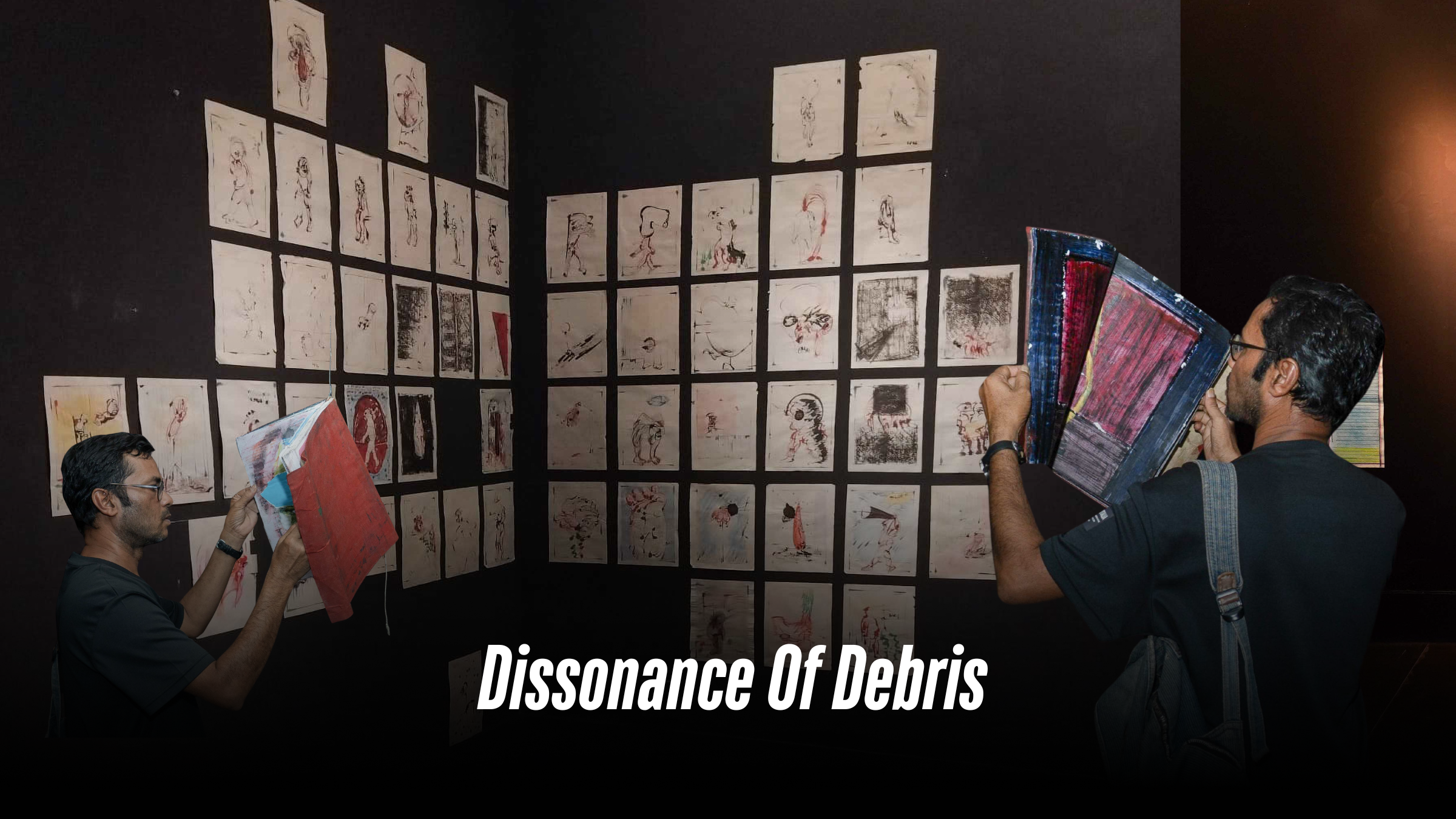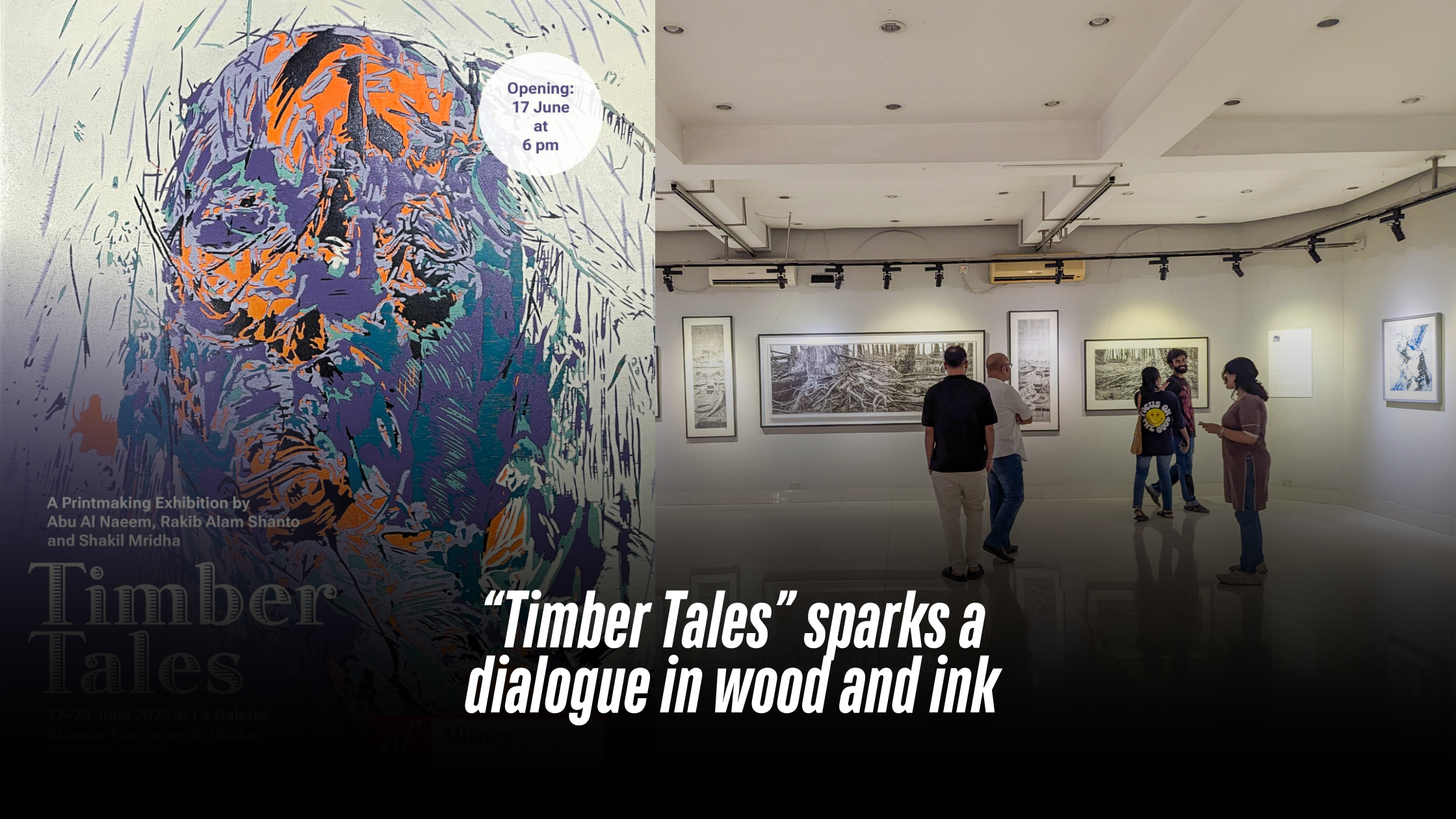9TH ISSUE

Dream Train in the City of Oysters
Cox’s Bazar Rail Station has been built as a modern marvel for travelers. The new ‘green field’ of railway alignment has connected Cox’s Bazar, the top tourist destination and a rapidly developing region in Bangladesh. Finally, the long-term dream of tourists has been fulfilled. On November 11, 2023, Prime Minister Sheikh Hasina inaugurated the 102-kilometre dual gauge single railway line between Cox’s Bazar and Dohazari in Chattogram and the newly built Cox’s Bazar iconic rail station in the shape of oyster shell. The architect of the station, Mohammad Foyez Ullah, principal architect of Volume Zero Limited, took inspiration from the shape of an oyster for its exterior, which symbolises the beach. It is a station with marine atmosphere at first sight. With this, not only has the country’s leading tourist destination become more easily accessible, the entire southeast region is also poised for boosting trade and connectivity. The rail link project, the latest among several such communication-related projects, is part of an elaborate development scheme focused on Cox’s Bazar. Enhanced connectivity will be crucial for transportation of goods to and from Teknaf land port, as well as the growth of local industries including fish, salt, rubber raw materials, forest and agriculture products and dried fruits, according to local business experts. There are nine railway stations on this route, which means the surrounding areas will also see economic transformation. After Cox’s Bazar to Chattogram the stations are followed by Ramu, Islamabad, Dulahajara, Chakaria, Harbang, Lohagara, Satkania and Dohajari. The rail line will be extended to the Myanmar border, and to the planned deep-sea port on Matarbari Island. The extended part will have three stations – Ukhia, Teknaf and Ghumdhum (Bandarban). Cox’s Bazar Station to enhance tourists’ experience Nestled on a 29-acre expanse in Chanderpara, under the Jhilongjha union in Cox’s Bazar Sadar upazila, stands the paradise sighting station, located three km away from the sandy beach, built at a cost of Tk 215 crore. The six-storied building, covering 187,000 square feet area, captivates visitors with its unique exterior. The canopy serves a dual purpose — not only enhancing the station’s aesthetic appeal but also effectively cooling the building, ensuring proper air circulation, and welcoming ample natural light, according to the project engineers. Adding to the visual allure, a variety of coloured lights grace the front of the building, providing an artistic perspective to the station’s entrance. This station is Asia’s first 100 per cent tourist-friendly central air-conditioned multi-storied station. It has all kinds of facilities for tourists. Arrangements have also been made so that tourists can visit Cox’s Bazar in a day and return the same day without hotel accommodation. This railway is perfect Cox’s Bazar as an international tourist hub. It will be helpful to bring foreign tourists. Not only in the winter, tourists will be encouraged to visit Cox’s Bazar throughout the season including monsoon. In the construction of this iconic station, facilities of various modern stations of the world including China, Belgium, England, and Italy have been taken into consideration. A total of 250 engineers and more than 600 people, including 110 foreigners, were working in the entire project. After four years of hard work, the uniquely beautiful railway station building is visible today. On the ground floor, ticket counters, arrival and VIP lounges, ATM booths, Bank and forex service, pharmacy, post office, railway service office, baby care centre, information booth, and luggage lockers. The first floor offers a departure lounge, waiting lounges, display centres, locker room, prayer space, shops, and a cafe. Levels 2 to 5 house a shopping mall and food court, bookshop, five-star overnight stay option with dining, office spaces, restaurants, a multipurpose hall and hotel with recreational space for passengers. The hotel has 39 rooms. The fourth floor is intended to be leased for offices and conferences. Top floor reserved for future use. Travelers arriving at Cox’s Bazar by overnight train can conveniently store their belongings in lockers and explore the beach and other tourist spots during the day before catching a night train back to Chattogram or Dhaka. Tourists can leave their luggage in station lockers while they enjoy their time sightseeing at the beaches and tourist sites. Around 500 tourists will be able to keep their luggage in the station lockers at a time. As a result, tourists would be able to leave Cox’s Bazar without staying at night in hotel. However, they have to pay locker rent for this. The station is equipped with ample amenities, including escalators, lifts, parking area and refresh rooms for men, women, and those with physical disabilities. Accessing any of the three platforms is made easy with a footover bridge connected to escalators, staircases, and a ramp bridge facilitating movement between platforms. The rail station also features separate facilities for women, children, the elderly people. The Cox’s Bazar station has the capacity to transport around 50,000 people each day, as well as facilitate the operation of wagons for transporting fish, dried fish, salt and other items. Work of the project is being completed in two parts with China Railway Engineering Cooperation (CREC) and Toma Construction carrying out the first part from Dohajari to Chakaria and China Civil Engineering Construction Corporation (CCECC) and Max Infrastructure Limited are doing another part from Chakaria to Cox’s Bazar. Additional Deputy Inspector General of Tourist Police Cox’s Bazar region Apel Mahmud said the arrival of tourists in Cox’s Bazar will increase, thanks to the train service. All kinds of preparations have been made for the service and safety of tourists, he added. Passengers say the journey is enjoyable. A crooked rail line has been built through the green field and forest. Sometimes the hills touch, sometimes the eyes will be drawn to the unique beauty of the green village of Bangladesh. A hundred kilometers of railways has completed to see such a scene. Every station is equipped with relay batteries, generator rooms, sewage and waste management facilities, and energy-saving features such as solar panels. Both meter and broad gauge rail
Read More
Ahead in Time’s Silent Symphony
Beyond his role as an innovative architect, Muzharul Islam was characterised by humility and an unassuming nature. His consistent choice of traditional clothing and a preference for a modest lifestyle indicated a deep commitment to his craft rather than a pursuit of personal recognition. The simplicity and focus on perfection in his work underscored the profound impact of his architectural contributions, and the enduring prominence of his legacy in South Asian architecture speaks volumes about his unwavering dedication and passion.
Read More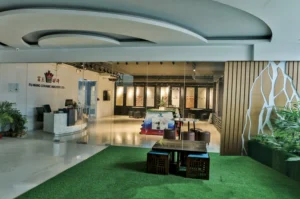
Fu-Wang Ceramic Industry A Journey of Resilience and Growth
FU-WANG Ceramic Industry Limited, founded in 1995 as a joint venture between Taiwan and Bangladesh, has evolved into a major player in the ceramic industry. Despite Taiwan investors’ departure in 2008, the company continued to thrive, reshaping the landscape of ceramic production in Bangladesh. During the 1990s, Bangladesh heavily relied on ceramic imports from countries such as China, Sri Lanka, Spain, and Italy. Fu-Wang entered the market and made a significant impact. Subsequently, other prominent players like RAK, CBC, and Mir Ceramic joined, solidifying their presence in the country’s tiles market. Presently, RAK, DBL, Fresh, Fu-Wang, and X Ceramic are the key players in Bangladesh’s tiles sector. With an aggregate investment of $1.8 billion in the ceramic sector, of which 66 per cent is allocated to the tiles, the domestic tile market is valued at $650 million. Fu-Wang Ceramic Industry went public in 1998, listing its shares on the Dhaka and Chattogram Stock Exchanges. Fu-Wang Ceramic has created a good number of employment opportunities. Its products are manufactured in the factory of Gazipur. The company has since maintained impressive annual growth, consistently achieving a 20 per cent increase. Product diversification and challenges faced Fu-Wang Ceramic Industry is known for producing two types of products: those tailored for the mass market including industries, universities, shopping mall etc. and luxurious tiles designed for apartments, hotels and offices. The company has also introduced high-quality brands like Picasso and Picasso Premium, offering larger wall sizes and various floor sizes tiles under the guidance of European and Asian technologists. The foundation of Picasso Premium 60x60cm PGVT tiles lies in state-of-the-art robotic technology. Each tile is crafted with unparalleled precision and accuracy, ensuring uniformity in size and shape. The company employs Nano Technology in the production of PGVT tiles, enhancing their durability and shine. This advanced technology creates a protective layer on the tile surface, making them resistant to scratches, stains, and wear. The timeless elegance of marble, the warmth of wood, or the modernity of concrete, Fu-Wang designs capture the essence of nature and elevate the interior design to new heights. Each of 60x60cm PGVT tiles is meticulously packed with a surface protective film. This film safeguards the tiles during transportation and installation. However, the industry currently is facing a range of challenges. These include difficulties in opening Letters of Credit (L/C), surging natural gas prices coupled with low gas pressure, and unreliable electricity supply to factories. Moreover, navigating the intricate landscape of government policies has posed additional obstacles for businesses in Bangladesh. Besides, current economic headwinds has contributed to decline in the sales of the ceramic products. To carry on the business, the government should withdraw Supplementary Duty (SD) on the local ceramic products and supply gas and electricity uninterruptedly to the factories. The CEO of Fu-Wang Ceramic Industry Limited (FWCIL), Mr. Rafiquzzaman Bhuiyan, shared his experiences with the Ceramic Bangladesh (CB) in an exclusive interview. Adapting to market dynamics Despite these challenges, Fu-Wang Ceramic Industry remains steadfast in its commitment to leading the tiles sector in Bangladesh. The CEO recognises that competition is intensifying, and only large companies will be able endure while smaller ones might face closure. Making profit is tough due to competition. Besides, the demand for high-value and luxurious products is increasing in local and international markets. So, small companies have to compete with large companies. However, considering current market demand, they have to change product designs in accordance with new technology. Now local companies are meeting 85 per cent domestic market demand. And the rest of 15 per cent is met by imported products. If they can reduce import dependency further, dollar reserve will increase. So, policy support is crucial. “Our plan for the future is to manufacture selective and valuable products to compete in the market. We will expand our production base. Mass production helps to reduce product costs. We will produce high-value products in the future increasing market demand,” said Mr. Rafiquzzaman Bhuiyan. To meet the evolving market demands, Fu-Wang plans to adapt its product designs using new technologies. Moreover, they aim to reduce their dependency on imported products to bolster their reserves. The company’s strategy for the future is to manufacture selective and high-value products to cater to the increasing demand in both local and international markets. Export challenges, domestic potential While the export market has presented challenges due to global competitiveness, the domestic market for tiles has experienced significant growth. Changes in people’s lifestyles and increased per capita income have contributed to the surge in demand. Fu-Wang is exploring the possibility of entering the tableware manufacturing sector and is focusing on branding and digital marketing to expand its market presence. A call for government support and FDI The domestic demand for tiles has increased vastly thanks to change in people’s lifestyles and booming construction sector. A good number of companies have also been established here. In Bangladesh, the number of tile companies may further go up as tiles are now used in rural areas too. So the market is expanding, and it will continue to expand. People are spending more money on their houses as a pre-emerging country. In this context, Fu-Wang management is planning to what type of new products can be brought in the market in future. Meanwhile, Bangladesh has made a reputation in the international market exporting high-valued tableware products. However, there is a huge potential for foreign direct investments (FDI) in Bangladesh. The government has set up 100 special economic zones, something which is a positive initiative to bring more FDI. Also, there are some challenges including land scarcity, gas and utility supply, and the business operational registration process. All problems should be resolved as soon as possible. Besides, transparency and accountability are crucial to ensure ease of doing business. Basically, the country’s all services should be available on online. Mr. Rafiquzzaman Bhuiyan underscored the need for government support, including withdrawal of supplementary duty on local ceramic products, reducing import duties on raw materials, uninterrupted gas supply, and reliable
Read More
Silence, an Integral Aspect of Architecture
As Nurur Rahman Khan commenced his discussion on architecture, a concept exists only as an idea that becomes apparent once it is created. Attaining the deep level of architecture requires a great deal of time, attention, and meditation. If we wish to reach that level of it, we must bring our soul to it. It could be difficult for the public to comprehend or accept it entirely. Nurur Rahman Khan began his architectural career at Bangladesh University of Engineering and Technology (BUET), despite lack of understanding of how architecture functions. The sole realisation he possessed was that architecture constitutes a fusion of engineering and creativity. In his formative years, he delved deeply into music, photography, graphic design, acting and writing alike. Before he began his career in architecture, he had no prior experiences in drawing or sketching. Over the time, he acquired the skill of drawing architecture from mathematical drawings in the form of ‘axonometric’ drawings. He did not become aware of architecture until the very end of his first academic year, since it was then that he was able to appreciate architecture’s beauty. As a consequence of his subpar craftsmanship, he used to receive lower grades. After his first year of school, he began going to the library to learn about the aesthetics of architecture. It was at that point during which he began comprehending the aesthetics of architecture, and since then he never stopped his journey to acquire knowledge about it thereafter. He continued by outlining the method by which architects prioritise aesthetics over attaining the fundamental purpose of their design, instead of flaunting the design, one should be proud of it. The greatest architect of Bangladesh, according to him, is Muzharul Islam, and his level of prosperity ends there. We are forfeiting numerous facets, failing to appreciate the true essence of architecture. Our focus has shifted towards the grandiose, the towering, and the extravagant, relinquishing our humanity to the allure of grandeur and brand-centric values. Addressing the architects within our community, NR Khan inquired about the apparent challenge in reaching the remarkable levels of creativity and imagination set by Muzharul Islam in the field of architecture. Tanya Karim and Nurur Rahman Khan, who are partners, founded an architectural firm with the goal of significantly altering the architectural arena. Their office became known for its theoretical pretext, search for situated modernity, and use of historical and cultural allusions. In the summer of 1991, Tanya Karim, NR Khan & Associates became known as an architectural firm leading the way in modern ideas in Bangladeshi architecture. Throughout his academic journey, he teamed up with Tanya Karim as a groupmate, and their collaborative synergy flourished after they graduated between the years 1992 to 1993. In his viewpoint, when discussing Tanya Karim, he recognised her as a nurturing figure who would impart knowledge to classmates just before exams. He highlighted the enduring complementarity between himself and Tanya Karim. During their studies with her, a profound mental connection was forged. Tanya Karim played a pivotal role in enlightening him about the intricacies of art, fashion, and other facets of design, drawing from her upbringing in a culturally enriched family. Their designs are always inextricably linked to the point at which the architecture’s user finds it worthwhile. One of their cherished projects is the Shanchita Residence, envisioned as a Baganbari- A House in a Garden. It was conceived with the idea of providing a nurturing environment for both the users and their children to cherish as they grow. The concept of Baganbari is not merely about architecture; it’s a philosophy woven into the very roots of the design. It is a place where family bonds are nurtured, and the architecture becomes a silent witness to the laughter, joy, and shared moments that shape the family. “A project is a canvas of someone else and we are the architects painting on it, if we indulged a self-centered design, it definitely would have a short lifespan,” Nurur Rahman Khan remarked. They (TKNRK) have secured positions of distinction in numerous competitions, notably triumphing in the National Competition organised by the Institute of Architects Bangladesh (IAB) in 2012. They clinched the 1st prize for their outstanding design of the Bangla Academy. The Bangla Academy project takes a multifaceted approach to sustainability rather than focusing only on being “environment friendly”. “Site” is the first sustainability metric that the project looks at. On the grounds of a historic building and later additions to the “Bangla Academy complex’’. In the modern era, there appears to be a tendency to use sophisticated design techniques and technology in order to achieve a “green” solution to building design. It is important to remember that utilising the actual “environment” is one of the most logical approaches to designing “environment friendly” architecture. The site, the environment, and the climate should take center stage. “Indifferent” methods can be used to create a successful “green” architectural design. As for the building design, a significant portion of the office building has been designed to benefit from natural ventilation and abundant natural lights. Most days, the interior is bathed in natural light, creating a well-lit and airy environment. Moreover, when discussing TKNRK, he emphasized, “We are forward-thinking individuals, acutely aware of the essence of our architectural pursuits. Our ancestors crafted cities like Mahasthangarh 2000 years ago without external guidance as today’s. Therefore, as architects today, why limit ourselves to the mundane concept of a ‘Kurey Ghar’ (hut) that does not align with our cultural heritage? Instead, let’s draw inspiration from the grandeur of the cities our forebears-built millennia ago and aspire to create something extraordinary. By utilizing costly materials to create an appearance of frugality, we are engaging in economic dishonestly within the country. This practice not only deceives the economy but also reflects a lack of integrity towards the materials themselves.” For him, it holds paramount importance to instill into people a genuine understanding of the true essence and user-centricity of architecture, steering clear of the reliance on
Read More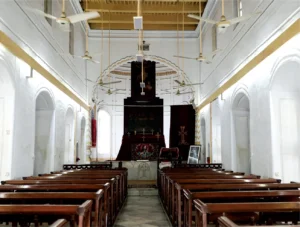
Remains of ARMENIA
As you walk through that particular street of Armanitola where the Armenian Church has been perching for almost two and a half centuries, its white coloured skin subtly piercing you with an invitation to enter inside, a peculiar sillage coming to life from the hundreds of variants of notes from the line of perfume shops beside, mixed with the eerie scents carried by the winds flowing over the Buriganga which is just within a minute of walking distance, will hit your nostrils. Soon, you will start noticing all the examples of unplanned and unappetising architectures of different heights and looks that popped up in the recent decades and still keeps popping up every now and then with no signs of stopping, trying its best to engulf the church with the shadows of its murky glory. The current state of many of the historical structures that had been living in Old Dhaka for centuries, is just like the present attire of Old Dhaka that we gradually forced her to wear – a living testament of what we were, what we could have been and what we are now.
Read More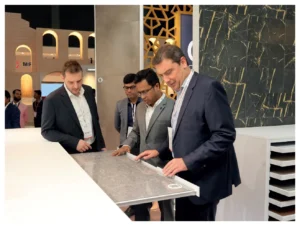
Innovation unleashed at the Ceramic Expo Bangladesh-2022
The first few teasers of the Ceramic Expo Bangladesh-2022 ushered in the forthcoming of one of the biggest and highly anticipated ceramic events in the country. The event took place in ICCB, Dhaka, from 24-26 November, 2022, and was buzzing with visitors all three days. The Ceramic Expo housed 120 exhibitors, 300 brands from 20 countries, and 500 delegates, along with a whopping 23,000 visitors. It brought under one roofexporters, manufacturers and suppliers of ceramic and related products. During the event, visitors came from all over, dispersed excitement across the venue, and filled it with murmurs of conversations. As excitement spread, we saw visitors and exhibitors interact, and the event turn into a big success.
Read More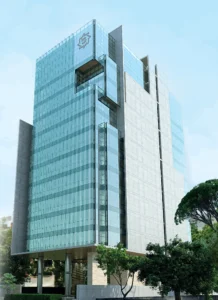
Shahjalal Bank First Green Building in the Banking Sector of Bangladesh
Shahjalal Islami Bank PLC is playing an important role in providing investment in all areas of manufacturing and service sectors, ready-made garments, trade financing, infrastructure and agriculture. Starting operations on 10 May 2001, the bank is running with 12,40,000 deposit and investment customers. As a third generation Islamic Shariah-based private commercial bank of the country, Shahjalal Islami bank plc has reached a strong position within a short span of time and has been playing a worthy role in the economic development. The financial base of this bank is very strong. The bank has currently been providing banking services to its customers with great reputation and trust through 140 branches, 4 sub-branches, hundreds of ATM booths and agent banking outlets, one offshore banking unit and priority centre across the country with 3,000 staffs. It has its iconic 17-storied building with basement on Gulshan Avenue in the capital Dhaka, where the bank’s head office operations are being conducted and being USGBC Lead Gold certified, this building is the first green building in the banking sector in the country. Renowned Architecht Prof. Shamsul Wares has designed the building.
Read More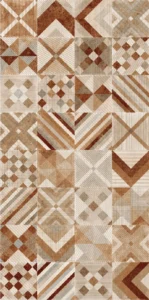
RAK slabs to grace your very own
The ceramic industry is a flourishing demography with innovation at the forefront. Today, we have a brand that resembles elegance and reputation behind it, and also has the potential capability to do outstandingly. Slabs have been used in primitive times and has a clay composition. It came into existence in construction to cover roofs and floors, and the slabs streamlined surfaces and covered more spaces with less grout lines. Clay slab absorbs moisture.
Read More
CONCORD The Pioneer in Construction
Concord is the only Bangladeshi company that has completed a 720-foot tall, iconic and technically challenging structure abroad. The SINGTEL Telecom Tower in Singapore was built by Concord in collaboration with Sumimoto Mitsui Construction Company Japan. Concord is proud for the National Martyrs’ Memorial (Jatiyo Smriti Soudho), the national monument of Bangladesh, set up in the memory of those who laid down their lives in the country’s War of Independence in 1971. The monument is located in Savar, about 35 km northwest of the capital, Dhaka. It was designed by Syed Mainul Hossain and built by Concord in 1982 in only 89 days.
Read More
A Look Inside the Vibrant World the Potato Digital Office
Designed by architects Sanzid Iqbal Rizvee and Rubayet Ferdous, construction for the Potato Digital Office commenced in May 2022 and was successfully inaugurated in June 2022. Remarkably, within a brief period of 45 days, the team efficiently designed and executed the vibrant space at their new Gulshan branch. Soon, the office turned out to be the talk of the town.
Read More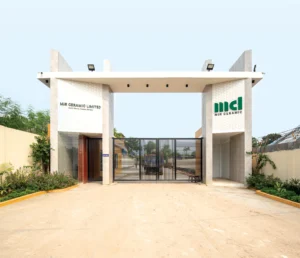
Shahanawaz Maestro of Ceramics, Carving a Lasting Legacy in Bangladesh’s Ceramic Tapestry
In the captivating tapestry of Bangladesh’s ceramic industry, one name resonates as a beacon of creativity, dedication, and unwavering passion. That is Shahanawaz. With over three decades of commitment, Shahanawaz’s journey through the twists and turns of the ceramic sector has become a legendary one.
Read More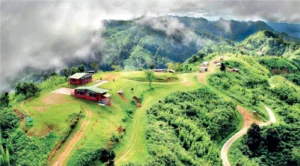
Caressing The Clouds From 3,235 Feet Above in Bandarban
Bandarban is more like a complete, separate entity and a world of its own, lying gracefully and peacefully on the south-eastern part of Bangladesh. When the lethargy hits you amid the daily blues, this place can work as a whimsical healer and boost our weary souls.
Read More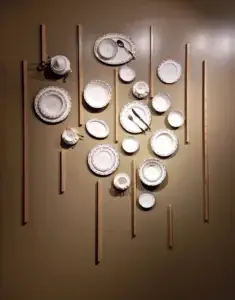
Spilling teas from Monno Tea Room
After establishing a glorious legacy of around four decades, Monno Ceramics not only made a mark in the people’s hearts but also in their households. Now that it has stretched its new endeavour into a restaurant, one must wonder if it was only organic to come up with the idea since Monno already has its hands on the core ingredient of any eatery, which is tableware!
Read More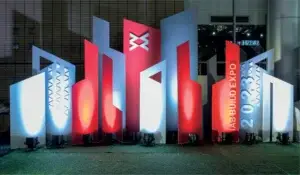
IAB Build Expo 2023
Once upon a time, people were unaware about the concept of green construction which refers to sustainable building or other establishments. Now a remarkable change is noticed in the construction sector of the country, thanks to local entrepreneurs, traders, and architects. Nowadays, the demand for environment-friendly construction materials including blocks and ceramic products is going up significantly.
Read More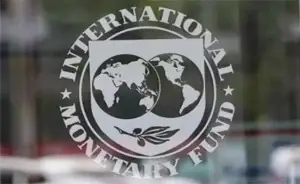
Economy in the Doldrums with Inflationary Pressure, Dollar Crisis
Bangladesh sees the end of 2023 with a huge deficit in its financial accounts, the widest gap between foreign currency income and expenses in its history. Consequently, the Bangladesh Bank is struggling to arrest the decline in foreign exchange reserves. This has led to a record imbalance in the overall balance of payments. The repercussions of this financial strains have extended to the commoners and made the fiscal year 2023-24 exceptionally challenging. Despite assurance from the Finance Minister in his budget speech that inflation would be contained at 5.6 per cent, average inflation rate was 9.2 per cent, intensifying the economic pressure and exacerbating the burden of soaring commodity prices on the ordinary people.
Read More



